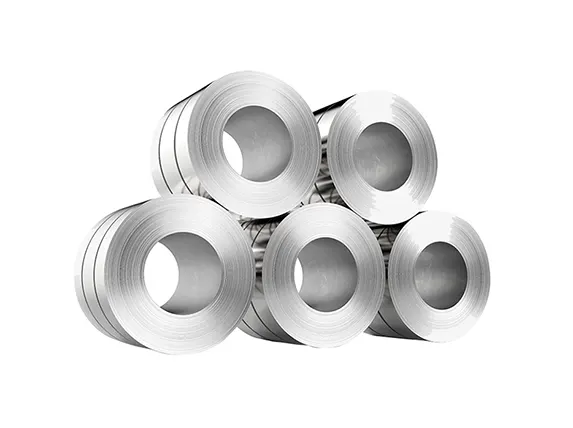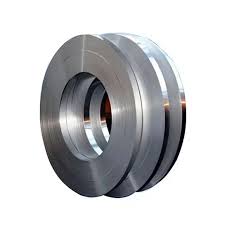Perfil de acero inoxidable 420


Información básica de SS 420
Descripción general
El acero inoxidable 420, conocido como S42000, es una aleación martensítica endurecible que destaca por su mayor resistencia y dureza en comparación con otros aceros inoxidables como el 410 y el 416. Contiene al menos cromo 12% para resistencia a la corrosión y un mayor contenido de carbono, lo que aumenta su resistencia al desgaste y le permite alcanzar una dureza Rockwell de hasta 50 HRC después del tratamiento térmico. Este acero exhibe buena ductilidad en estado recocido, pero su maquinabilidad disminuye una vez endurecido por encima de 30 HRC. A pesar de su buena resistencia a la corrosión, especialmente cuando se templa y se pule, no es tan resistente como los grados austeníticos comunes y está limitado por una pérdida de ductilidad a temperaturas bajo cero y una pérdida de resistencia a temperaturas elevadas debido al sobretemperado. Las aplicaciones comunes incluyen bujes, instrumentos dentales y quirúrgicos, piezas de bombas, componentes de válvulas y ejes. No se recomienda su uso por encima de temperaturas de revenido debido a una reducción de las propiedades mecánicas, y la soldadura es posible con las técnicas adecuadas.
Propiedades generales
El acero inoxidable 420 es un grado martensítico con alto contenido de carbono que ofrece un equilibrio perfecto entre dureza y resistencia a la corrosión. Es conocido por su alta dureza, resistencia al desgaste y resistencia moderada a la corrosión. Su composición incluye carbono (C: 0,15-0,401 TP₃T), cromo (Cr: 12,0-14,01 TP₃T) y otros elementos en cantidades menores, como manganeso (Mn), silicio (Si), fósforo (P) y azufre (S).
Aplicaciones
El acero inoxidable 420 se utiliza en diversas aplicaciones donde la resistencia y la durabilidad son esenciales, como en cuchillería, instrumental quirúrgico y herramientas. También se utiliza en maquinaria de precisión, rodamientos, equipos eléctricos, instrumentos, vehículos de transporte, electrodomésticos y utensilios para alimentos.
Resistencia del acero inoxidable 420
Resistencia a la corrosión:
Si bien el acero inoxidable 420 ofrece buena resistencia a la corrosión, especialmente al ser templado y pulido, no es tan resistente como los grados austeníticos comunes. Su resistencia a la corrosión se ve comprometida a temperaturas bajo cero y elevadas debido al sobretemperado.
Resistencia al calor:
El rango operativo útil del acero inoxidable 420 está limitado por su pérdida de ductilidad a temperaturas bajo cero y pérdida de resistencia a temperaturas elevadas debido al sobretemperatura.
Procesamiento de acero inoxidable tipo 420
Maquinabilidad:
El acero inoxidable 420 es relativamente fácil de mecanizar en estado recocido, pero el mecanizado se vuelve más difícil una vez endurecido a más de 30 HRC.
Soldadura:
La soldadura no es común para esta aleación debido a sus propiedades de endurecimiento, pero es posible con las técnicas adecuadas y el tratamiento térmico posterior a la soldadura para evitar el agrietamiento.
Trabajo en caliente:
El trabajo en caliente del acero inoxidable 420 puede mejorar su tenacidad y resistencia al desgaste.
Trabajo en frío:
El trabajo en frío puede aumentar la dureza y la resistencia del acero, mejorando al mismo tiempo su calidad superficial y su precisión dimensional.
Recocido:
El recocido se utiliza para ablandar el acero, mejorar la maquinabilidad y prepararlo para posteriores procesos de tratamiento térmico.
Templado:
El revenido se utiliza para reducir la fragilidad y las tensiones internas después del endurecimiento.
Endurecimiento:
El acero inoxidable 420 se puede endurecer para lograr altos niveles de dureza mediante un proceso de calentamiento y enfriamiento rápido (temple).
Propiedades físicas del acero inoxidable 420
| Propiedad | Valor |
|---|---|
| Densidad | 7,74 g/cm³ |
| Módulo de elasticidad | 200 GPa (29 x 10^6 psi) |
| Coeficiente de expansión térmica | 10,3 μm/m·°C (5,7 μpulg./pulg.·°F) |
| Conductividad térmica | 24,9 W/m·K (14,4 Btu/ft·h·°F) |
| Calor específico | 460 J/kg·K (0,11 Btu/lb·°F) a 0-100 °C (32 a 212 °F) |
| Resistividad eléctrica | 0,55 μΩ·m a 20 °C |
Propiedades mecánicas del acero inoxidable 420
Propiedad | Resistencia a la fluencia, mín. (ksi) | Resistencia a la tracción, mín. (ksi) | Alargamiento, mín. (%) | Dureza, máx. (Rb) |
420 | 345 (50) | 655 (95) | 25 | 321 HBS |
Composición química del acero inoxidable 420
| Calificación | Carbono (C) | Manganeso (Mn) | Silicio (Si) | Fósforo (P) | Azufre (S) | Cromo (Cr) | Níquel (Ni) | Molibdeno (Mo) | Hierro (Fe) |
| 420 | 0.15 - 0.40% | ≤1.00% | ≤1.00% | ≤0,040% | ≤0.030% | 12.0 - 14.0% | ≤0,75% | ≤0,50% | Balance |
Acero inoxidable 420: la mejor opción para cuchillos: resistente a la corrosión y limpio

Buena resistencia a la corrosión
El acero inoxidable 420 funciona excepcionalmente bien en ambientes húmedos o hostiles, resistiendo el óxido y prolongando la vida útil del producto.

Alta resistencia
El SS420 tiene una alta resistencia, lo que lo hace adecuado para aplicaciones que requieren alto estrés y uso frecuente, como herramientas y equipos médicos.

Fácil de limpiar
El acero inoxidable 420 tiene una superficie lisa que no acumula fácilmente suciedad, lo que hace que sea fácil de limpiar y mantener, haciéndolo muy adecuado para el procesamiento de alimentos y entornos médicos.
SS420 J1 J2
Especificaciones de bobinas y láminas de acero inoxidable 420 de Sanmei

Para bobina
| Tipo | Ancho (mm) | Peso (MT) | Espesor (mm) | ||||
| Bobina 420 | 1000, 1219, 1240, 1500 o personalizado | 3-10 | 0.15-3.0 | ||||

Para hojas
| Tipo | Ancho (mm) | Longitud (mm) | Espesor (mm) | |||||||||
| 420 hojas | 1000, 1219, 1240, 1500 o personalizado | 2000, 2438, 2500, 3000, 3048 | 0.3-3.0 | |||||||||
Numerosos acabados decorativos para su chapa de acero inoxidable
Tratamiento de la superficie de la bobina de acero inoxidable
Servicio completo de procesamiento de metales especiales
Nos comprometemos a brindar a nuestros clientes el mejor servicio y de la más alta calidad para garantizar su satisfacción.

Corte de precisión
Corte de longitud personalizada

Cizallamiento

Recorte de bordes

Producción en blanco

Pulido de superficies

Nivelación de tensión

Servicios de fabricación
Más de 20 recursos de fabricantes líderes de acero inoxidable en China.


El proveedor en el que puede confiar
Certificados por prestigiosas instituciones y comprometidos a adherirnos a los estándares internacionales en todos los aspectos.




Nuestro as: Atención al cliente sincera
La opinión de los clientes es el reflejo más auténtico de la calidad de una empresa.
Conozca más detalles sobre
Ver más referencias técnicas de Sanmei Metal sobre bobinas de acero inoxidable y chapas de acero inoxidable.














